Legacy
The research that led to CimCure’s technology started in 1994 in the Angiogenesis Laboratory, that is currently located at Amsterdam UMC.
While studying a strategy to help white blood cells enter a tumour, it was discovered that blood vessels in – and around – the tumour were reluctant to interact with white blood cells. This appeared to be the result of the disappearance of adhesion molecules involved in blood cell interactions that are present in healthy normal blood vessels. This way the tumour escapes from immunity and can grow without limit.
It was also discovered that the reason for the lack of adhesion molecules is the exposure to THOSE growth factors that induce the formation of new blood vessels, a process called angiogenesis. Also, endothelial cells were found to be insensitive to cytokines that normally INDUCE adhesion molecules.

(This important mechanism of escape from immunity was termed tumour endothelial cell anergy1,2.)
While this research progressed, research from other laboratories in the world suggested that inhibitors of angiogenesis can be instrumental in the fight against cancer and many anti-angiogenic drugs were being discovered. Therefore, once it became clear that ongoing angiogenesis orchestrates immune suppression, it was hypothesized that angiogenesis inhibition could overcome tumour endothelial cell anergy. Eventually, we unequivocally demonstrated that angiogenesis inhibitors normalize the tumour vasculature and improve anti-cancer immunity3-5.
Recently, many clinical studies have even shown the benefit of combining immunotherapy with immune checkpoint inhibitors with anti-angiogenic compounds6-8. A recent review puts all this research into perspective9.
This previous research led to the understanding that angiogenesis inhibitors COMBINED WITH have a major benefit. Next to inhibiting angiogenesis, which unfortunately did not live up to its expectations in terms of increasing overall survival, they can additionally improve anti-tumour immunity as well as cancer immunotherapy.
Another insight from our research is that inhibition of angiogenesis should never be achieved by counteracting tumour-produced growth factors or their receptors. This would easily induce resistance to the drug, as tumour cells mutate10. Instead, anti-angiogenic drugs should be directly targeted towards the tumour vasculature. CimCure’s research is directly aiming for that11,12. The large number of advantages of a vaccination approach over the use of small molecules or monoclonal antibodies underpins the impact of CimCure’s iBoost technology13.
CimCure’s research has led to the filing of 2 patents, one in 2015, and one in 2022, both protecting the technology of our vaccine strategy as well as the identified target molecules. CimCure has a world-wide exclusive licence for both patents.
Literature
-
Griffioen AW, Damen CA, Blijham GH, Groenewegen G. Tumor angiogenesis is accompanied by a decreased inflammatory response of tumor-associated endothelium. Blood 1996; 88(2): 667-73.
-
Griffioen AW, Damen CA, Martinotti S, Blijham GH, Groenewegen G. Endothelial intercellular adhesion molecule-1 expression is suppressed in human malignancies: the role of angiogenic factors. Cancer Res 1996; 56(5): 1111-17.
-
Dirkx AE, oude Egbrink MG, Castermans K, et al. Anti-angiogenesis therapy can overcome endothelial cell anergy and promote leukocyte-endothelium interactions and infiltration in tumors. Faseb J 2006; 20(6): 621-30.
-
Dings RP, Vang KB, Castermans K, et al. Enhancement of T-cell-mediated antitumor response: angiostatic adjuvant to immunotherapy against cancer. Clin Cancer Res 2011; 17(10): 3134-45.
-
Nowak-Sliwinska P, van Beijnum JR, Griffioen CJ, et al. Proinflammatory activity of VEGF-targeted treatment through reversal of tumor endothelial cell anergy. Angiogenesis 2023; 26(2): 279-93.
-
Motzer R, Alekseev B, Rha SY, et al. Lenvatinib plus Pembrolizumab or Everolimus for Advanced Renal Cell Carcinoma. N Engl J Med 2021; 384(14): 1289-300.
-
Rini BI, Plimack ER, Stus V, et al. Pembrolizumab plus Axitinib versus Sunitinib for Advanced Renal-Cell Carcinoma. N Engl J Med 2019; 380(12): 1116-27.
-
Finn RS, Qin S, Ikeda M, et al. Atezolizumab plus Bevacizumab in Unresectable Hepatocellular Carcinoma. N Engl J Med 2020; 382(20): 1894-905.
-
Huinen Z, Huijbers EJM, Van Beijnum JR, Nowak-Sliwinska P, Griffioen AW. Anti-angiogenic agents – overcoming tumor endothelial cell anergy and improving immunotherapy outcomes. Nat Rev Clin Oncol 2021; 18(8): 527-40.
-
Van Beijnum J, Nowak-Sliwinska P, Huijbers EJ, Thijssen VL, Griffioen AW. The great escape; the hallmarks of resistance to angiostatic therapy. Pharmacol Rev 2015; 67: 441-61.
-
Thijssen VL, Postel R, Brandwijk RJ, et al. Galectin-1 is essential in tumor angiogenesis and is a target for antiangiogenesis therapy. Proc Natl Acad Sci U S A 2006; 103(43): 15975-80.
-
Van Beijnum JR, Huijbers EJM, Van Loon K, et al. Extracellular vimentin mimics VEGF and is a target for anti-angiogenic immunotherapy Nat Commun 2022; 13: 20.
-
Huijbers EJM, Van Beijnum JR, Le CT, et al. An improved conjugate vaccine technology; induction of antibody responses to the tumor vasculature. Vaccine 2018; 36: 3054-60.

